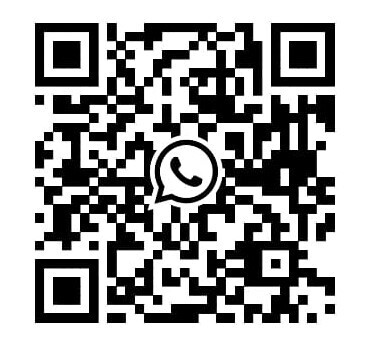How to Submit a PMTA Application for Vaping Products in the USA
Estimated 0 min read
The Premarket Tobacco Product Application (PMTA) is a crucial regulatory process defined by the U.S. Food and Drug Administration (FDA) to assess new tobacco products, including electronic nicotine delivery systems (ENDS), such as e-cigarettes and vaping devices. This thorough evaluation determines whether a product is suitable for the U.S. market based on its potential impact on public health, ensuring that both users and non-users are protected.
For manufacturers and companies in the vaping industry, navigating the PMTA application is essential to ensure regulatory compliance. In this guide, we’ll walk you through the necessary steps to apply for a PMTA in the USA, outline the PMTA application cost, and explain how to achieve PMTA approval for your products.
Table of Contents
- How to Apply for a PMTA in the United States
- Understand the Regulatory Framework
- Prepare Your PMTA Application
- Submitting Your PMTA
- FDA Evaluation Process
- Post-Approval Obligations
- PMTA Application Cost
- PMTA Approved List
- Key Challenges and Industry Insights
- Conclusion
How to Apply for a PMTA in the United States
The process of obtaining PMTA approval is multi-faceted and requires careful attention to detail. Here's a step-by-step breakdown to help you understand the process:
1. Understand the Regulatory Framework
Before you start, it's essential to familiarize yourself with the regulatory guidelines that define the PMTA process:
- Learn About the FDA's PMTA Requirements: Review Section 910(b) of the Federal Food, Drug, and Cosmetic Act (FD&C Act) and 21 CFR Part 1114, which outline the FDA PMTA standards.
- Compile Scientific Data: Prepare detailed data on your product’s health risks, chemical ingredients, manufacturing methods, and potential effects on both users and non-users.
2. Prepare Your PMTA Application
A well-rounded PMTA application should include a variety of crucial details:
- Product Breakdown: Provide an in-depth analysis of your product’s ingredients, additives, components, and overall design.
- Manufacturing Process: Detail your product’s production process, including quality control measures, facility certifications, and consistency protocols.
- Health Risk Studies: Supply comprehensive studies that assess potential health risks, toxicology results, and any potential long-term effects on users.
- Behavioral Analysis: Include studies that explore how your product affects user behavior, whether it promotes initiation among non-smokers or assists with smoking cessation among existing tobacco users.
- Marketing and Advertising Plans: Describe how your product will be marketed responsibly, with a focus on preventing youth access and minimizing its appeal to minors.
3. Submitting Your PMTA
Once your application is ready, the next step is submission:
- Electronic Submission: The FDA promotes using the CTP Portal for electronic submissions, helping to expedite the review process.
- Required Forms: Fill out the necessary FDA forms, including Form FDA 4057 for the main PMTA application and Form FDA 4057b to group your product information.
4. FDA Evaluation Process
The FDA’s assessment of your PMTA application follows a structured review process:
- Acceptance Review: Initially, the FDA checks whether your application meets the basic criteria for further processing.
- Filing Review: A detailed scientific evaluation is conducted to verify all necessary information has been included.
- Substantive Review: This phase includes an in-depth review of the scientific data to assess the public health impact of your product.
- Final Decision: After reviewing the data, the FDA will issue either a Marketing Granted Order (MGO) if your product is approved or a Marketing Denial Order (MDO) if it’s rejected.
5. Post-Approval Obligations
Once your product receives PMTA approval, there are several ongoing requirements:
- Marketing Granted Order (MGO): With approval, your product can be legally marketed, as long as you adhere to all ongoing FDA regulations.
- Post-Market Reporting: Regular updates regarding product performance, adverse reactions, and any product modifications must be submitted to the FDA.
PMTA Application Cost
The cost of applying for a PMTA can be considerable, depending on the complexity of the product and the quality of your submission. According to estimates from the FDA, preparing a full PMTA application for a product like e-liquids could cost hundreds of thousands to over a million dollars. This high cost can pose challenges, particularly for smaller businesses aiming to secure PMTA approval.
PMTA Approved List
As of December 2024, several products have received approval for sale via the PMTA process, particularly tobacco-flavored e-cigarettes. One example includes the FDA’s authorization of Vuse Solo tobacco-flavored products.
For the most up-to-date list of approved products, refer to the FDA’s Searchable Tobacco Products Database, which offers the most accurate details on PMTA-approved products.
Key Challenges and Industry Insights
The PMTA process has faced some scrutiny from the vaping industry, due to several challenges:
- Resource Requirements: Preparing a comprehensive application requires significant financial and human resources, which can be especially difficult for small businesses.
- Unpredictable Timelines: The FDA’s review process can be slow, creating uncertainty for manufacturers and delaying market entry.
- Market Limitations: Stringent PMTA requirements have led to a decrease in the number of available vaping products, potentially limiting options for adult smokers.
Despite these hurdles, there’s hope within the industry. Recent changes in U.S. regulatory policies could result in streamlined processes, offering a more balanced approach that protects public health while supporting innovation and accessibility within the vaping sector.
Conclusion
Successfully navigating the PMTA application process is essential for any manufacturer wishing to introduce new vaping products to the U.S. market. By thoroughly understanding the FDA’s requirements and preparing your application with precision, you can ensure your products are compliant and safe for consumers.
As the regulatory landscape continues to evolve, staying informed and adaptable will be crucial for companies that aim to succeed in the ever-changing vaping market.







